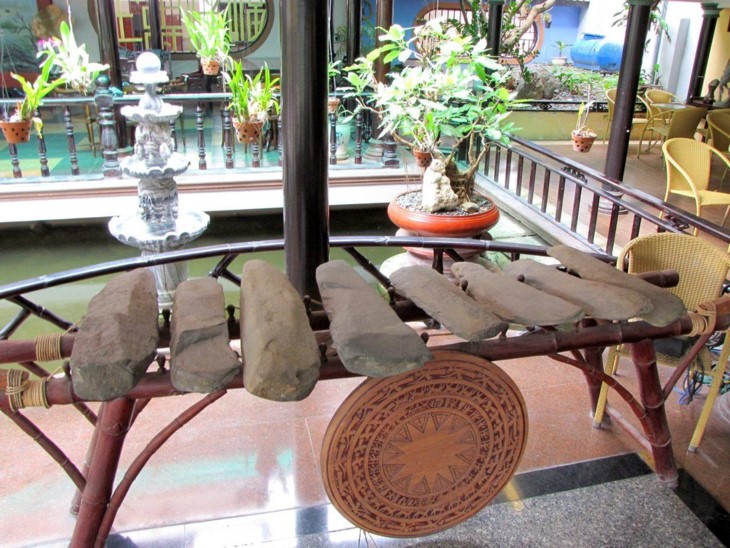(VOVWORLD) - Thousands of years ago, the lithophone emerged as a signature musical instrument of the Central Highlands. Local people call it a stone gong. The sound of the lithophone is sometime as deep as the forest, sometime as gentle as a brook. It can express the feeling of the instrumentalist and the state of their soul.
 A sample of the lithophone of the Central Highlands. A sample of the lithophone of the Central Highlands.
|
In 1949, road-builders discovered in Dak Lak province a set of 11 slabs which were shaped by human hands. Georges Condominas, a French archaeologist of the French School of the Far East, brought the find back to Paris for study. He said they didn’t look like any stone musical instruments previously known. The lithophone is now on display at the Paris Museum of Man.
Since then archaeologists and collectors have found 200 lithophones scattered across the Central Highlands. Each set has from between 3 to 15 slabs. The examination of the stone slabs found at the Binh Da archaeological site in the southern province of Dong Nai has revealed that this kind of instrument may have existed for over 3,000 years. Scientists found traces in Doc Gao mountain in the central province of Khanh Hoa which showed that the ancient Raglai people produced lithophones.
Pham Thanh Binh of the Khanh Hoa Museum said: “Archaeologists concluded that this place is the main area where the lithophones of prehistoric men were made. They found shaped slabs as well as broken pieces.”
The lithophones showed the musical sense and creativity of prehistoric men. The instrument was made from slate, granite and other stones. The slabs have different sizes to produce strong, light, deep, or soft sounds. It is believed they made the lithophones primarily to chase away wild beasts to protect their houses and crops and then also for entertainment. They believed the lithophones could connect yin and yang, man and genies, the present and the past. They played the lithophones at bumper crop ceremonies and other festivals.
Pham Quoc Tuan of the Yang Bay tourism complex’s management board explained: “Khanh Hoa province has 9 ethnic groups of which the Raglai is the majority. Among musical instruments, the lithophone is the oldest and most typical in Vietnam.”
Mr. Tuan said their lithophone has many slabs of different sizes which can play both traditional music and foreign works.
Natalia, a Russian tourist, was excited to hear a piece of Russian music played with the lithophone. She said: “I love the lithopone. I’ve visited many places and this is the first time I heard this musical instrument. When they play a piece of Russian music with the lithophone, I feel that there is no border between Vietnam and Russia. The lithophone brings us closer.”
The lithophone is recognized as a characteristic musical instrument of the Central Highlands’ Gong Cultural Space, which was inscribed in UNESCO's Representative List of the Intangible Cultural Heritage of Humanity.